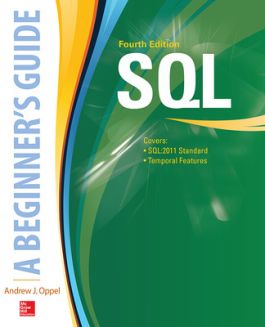SQL: A Beginner's Guide, Fourth Edition
Step 1. Download Adobe Digital Editions Both PC and Mac users will need to download Adobe Digital Editions to access their eBook. You can download Adobe Digital Editions at Adobe's website here.
Step 2. Register an Adobe ID if you do not already have one. (This step is optional, but allows you to open the file on multiple devices) Visit account.Adobe.com to register your Adobe account.
Step 3: Authorize Adobe Digital Editions using your Adobe ID. In Adobe Digital Editions, go to the Help menu. Choose “Authorize Computer.”
Step 4: Open your file with Adobe Digital Editions. Once you’ve linked your Adobe Digital Editions with your Adobe ID, you should be able to access your eBook on any device which supports Adobe Digital Editions and is authorized with your ID. If your eBook does not open in Adobe Digital Editions upon download, please contact customer service
Chapter 1. Introduction to Relational Databases and SQL
Chapter 2. Working with the SQL Environment
Chapter 3. Creating and Altering Tables
Chapter 4. Enforcing Data Integrity
Chapter 5. Creating SQL Views
Chapter 6. Managing Database Security
Part II: Data Access and Modification
Chapter 7. Querying Data
Chapter 8. Modifying Data
Chapter 9. Using Predicates
Chapter 10. Working with Functions and Value Expressions
Chapter 11. Accessing Multiple Tables
Chapter 12. Using Subqueries to Access and Modify Data
Chapter 13. Working with Temporal Data
Part III: Creating SQL Invoked Routings
Chapter 14. Creating SQL Invoked Routines
Chapter 15. Creating SQL Triggers
Chapter 16. Using SQL Servers
Chapter 17. Managing SQL Transactions
Chapter 18. Accessing SQL Data from Your Host Program
Chapter 19. Working with XML Data
Part IV: Appendices
Appendix A. Answers to Self Tests
Appendix B. Keywords
Thoroughly updated to reflect the most recent ANSI/ISO standard, SQL: A Beginner's Guide, Fourth Edition will get you up-and-running with SQL programming right away. Clear tutorials, annotated code, and proven instructional tools guide you to easily performing queries and modifications, building databases, creating and reviewing embedded statements, troubleshooting system- and data-related problems, and much more.
You will learn how to retrieve, insert, update, and delete database data, and perform management and administrative functions. The book also covers new features, including SQL/XML and the long-awaited temporal support. Code examples are provided throughout along with notes on using them with the latest RDBMS software versions such as MySQL 5.7, SQL Server 2014, and Oracle Database 12c.
- Platform-neutral coverage; all skills can be applied to any database product, and any SQL version
- Features hands-on exercises and self-tests that reinforce basic knowledge
- ”Ask the Expert” sections throughout are filled with bonus information and useful tips

